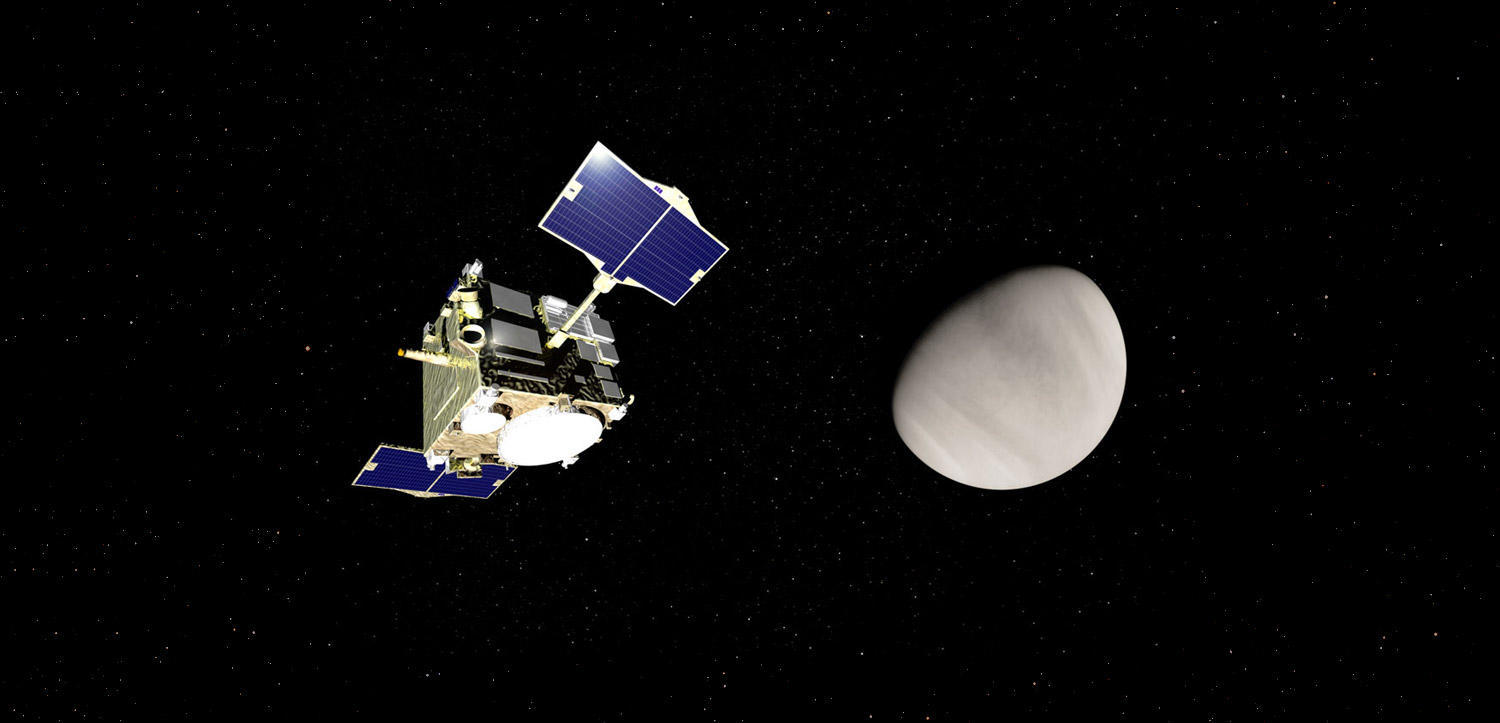Akatsuki

| Launch Date | May 21, 2010 |
| Launch Site | Tanegashima Space Center, Tanegashima, Japan |
| Destination | Venus |
| Type | Orbiter |
| Status | Successful–In Progress |
| Nation | Japan |
| Alternate Names | 2010-020D, Planet-C, Venus Climate Orbiter, 36576 |
Goals
Study weather patterns on Venus, confirm the presence of lightning in thick clouds and search for signs of active volcanism.
Accomplishments
Recovered from missed orbit insertion in 2010 and entered Venus orbit in 2015. Akatsuki is Japan's first successful mission to explore another planet.
Key Dates
May 21, 2010: Launch
Dec. 6, 2010: Venus Orbit Insertion - 1st Attempt
Dec. 7, 2015: Successful Venus Orbit Insertion
In Depth
The Venus Climate Orbiter mission (PLANET-C), or "AKATSUKI", is studying the atmospheric circulation of Venus. Meteorological information will be obtained by globally mapping clouds and minor constituents successively with four cameras at ultraviolet and infrared wavelengths, detecting lightning with a high-speed imager, and observing the vertical structure of the atmosphere with radio science techniques.
The equatorial elongated orbit with westward revolution matches the Venusian atmosphere, which rotates westward. The systematic, continuous imaging observations will provide us with an unprecedented large dataset of the Venusian atmospheric dynamics. Additional targets of the mission are the exploration of the ground surface and the observation of zodiacal light. The mission complements the European Space Agency's (ESA) Venus Express, which orbited Venus until 2014.
Spacecraft
Launch Vehicle: H-2A
Spacecraft Mass: 320 kilograms
Additional Resources
National Space Science Data Center Master Catalog: Akatsuki


